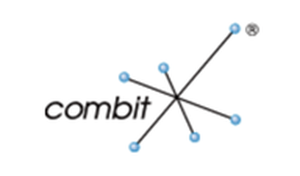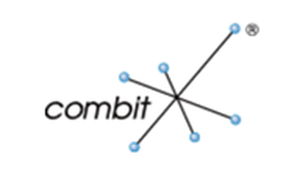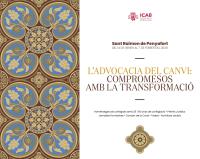
1. Hechos.
La compañía alemana combit Software , titular de unos registros de marca alemana y de la Unión Europea “COMBIT”, demandó a la compañía israelí Commit Business Solutions ante los tribunales alemanes, por la infracción de esas marcas cometida mediante la comercialización de programas informáticos bajo la marca “COMMIT”, que podían adquirirse desde Alemania a través de su página web.

En primera instancia, el Landgericht Düsseldorf desestimó la petición principal consistente en la orden de cese del uso del signo “COMMIT” en toda la Unión Europea, pero estimó la petición subsidiaria de orden de cese del uso del signo en Alemania.
La actora interpuso recurso de apelación ante el Oberlandesgericht Düsseldorf solicitando que se estimara su petición principal. El tribunal consideró que el uso del signo denominativo “COMMIT” por la demandada creaba en el consumidor medio germanoparlante un riesgo de confusión con la marca de la Unión “COMBIT”. Sin embargo, a su juicio tal riesgo no existía para el consumidor medio angloparlante, puesto que éste podía comprender con facilidad la diferencia conceptual entre el verbo inglés to commit y el término “combit”, compuesto por las letras “com”, por computer, y “bit”, por binary digit.
En esta situación, el Oberlandesgericht Düsseldorf plantea al Tribunal de Justicia de la Unión Europea la cuestión de cuál de los dos grupos de consumidores debe ser tenido en cuenta para valorar el riesgo de confusión, y si ha de apreciarse una violación de la marca de la Unión en todo el territorio de la Unión o se debe diferenciar entre los distintos Estados miembros.
2. Pronunciamientos.
El Tribunal de Justicia responde a las cuestiones planteadas considerando en primer lugar que cuando exista riesgo de confusión en una parte del territorio de la Unión Europea –en el caso examinado, en la parte de lengua alemana de la Unión- debe declararse la existencia de una violación de la marca de la Unión, aunque en otros territorios de la Unión no exista ese riesgo.
Además, el Tribunal de Justicia va un paso más allá de las cuestiones planteadas por el tribunal remitente y entra a valorar las consecuencias de esa declaración de infracción. A este respecto, concluye que en una situación como la planteada por el Oberlandesgericht Düsseldorf el tribunal de marca de la Unión debe dictar un mandamiento de cese de uso del signo infractor en todo el territorio de la Unión Europea, con excepción de la parte de éste en la que se haya constatado la inexistencia de riesgo de confusión.
Ahora bien, del Tribunal de Justicia puntualiza que corresponde al demandado acreditar la inexistencia del riesgo de confusión en una parte de la Unión. En esta situación, el tribunal de marcas de la Unión deberá identificar con precisión en su resolución esa parte de la Unión excluida de la orden de cese de uso del signo infractor. A este respecto, el TJ señala que en el caso examinado la expresión “zonas angloparlantes” empleada por el tribunal alemán remitente no es lo suficientemente precisa.
3. Comentario.
La respuesta del Tribunal de Justicia a la cuestión relativa a la declaración de infracción de la marca de la Unión es coherente con la solución adoptada en supuestos análogos en el ámbito de las oposiciones a solicitudes de marcas de la Unión, donde basta que exista riesgo de confusión con una marca anterior únicamente en una parte de la Unión para que se acuerde la denegación del registro.
En punto a la orden de cese derivada de esa declaración de infracción y la posibilidad de limitar su ámbito territorial, el TJ encuentra apoyo en la doctrina enunciada en su anterior sentencia de 12 de abril de 2011, DHL Express France, C-235/09. En esa sentencia el Tribunal de Justicia había resuelto que una prohibición de continuar cometiendo actos de violación o de intento de violación dictada por un tribunal de marcas de la Unión Europea debe extenderse, en principio, a todo el territorio de la Unión. Ahora bien, establecía la salvedad -apartado 48 de la sentencia- de que el demandado acreditara que el uso del signo infractor no podía menoscabar, especialmente por motivos lingüísticos, las funciones de la marca en una parte del territorio de la Unión, en cuyo caso el tribunal de marca de la Unión debía limitar el alcance territorial de la prohibición que impusiera.
Esta solución parece a primera vista contradictoria con el principio del carácter unitario de la marca de la Unión. El Tribunal de Justicia es consciente de esta aparente contradicción, y por este motivo se afirma en la sentencia que la interpretación adoptada no vulnera dicho principio porque se preserva el derecho del titular de la marca a instar la prohibición de cualquier uso que perjudique las funciones propias de la misma. El razonamiento lógico a través del cual el TJ vincula uno y otro concepto no se explicita, sin embargo, en la sentencia.
(Fuente de la información: ANUARIO ELZABURU 2016, recopilatorio de comentarios de jurisprudencia europea en materia de Derecho de Propiedad Industrial e Intelectual que realiza Elzaburu).
Documento citado:
- Sentencia Tribunal de Justicia (UE) Sala 11ª de 12 abril 2011, asunto 235/2009
ENGLISH VERSION
Territorial limitation of the effects of a finding of infringement of a European Union trademark. Judgment of the Court of Justice of 22 September 2016, combit Software (C-223/15).
1. Background.
The German company combit Software, holding German and EU “COMBIT” trademark registrations, sued the Israeli company Commit Business Solutions in the German courts for infringing those trademarks by using the “COMMIT” trademark to market software, which could be purchased on its website from Germany.

At first instance, the Landgericht Düsseldorf dismissed the principal claim consisting of an order to prohibit use of the “Commit” sign throughout the European Union, but it upheld the alternative claim for an order to prohibit use of the sign in Germany.
The plaintiff lodged an appeal with the Oberlandesgericht Düsseldorf, requesting that it accept its principal claim. The court considered that the defendant’s use of the word sign “COMMIT” gave rise, on the part of the average German-speaking consumer, to a likelihood of confusion with the EU trademark “COMBIT”. Nevertheless, in its view, there was no likelihood of confusion on the part of the average English-speaking consumer, who could readily understand the conceptual difference between the English verb to commit and the term “combit”, made up of the letters “com” for computer and “bit” for binary digit.
In those circumstances, the Oberlandesgericht Düsseldorf, in its reference for a preliminary ruling, asked the ECJ which of the two consumer groups should be taken into account when assessing the likelihood of confusion, and whether the EU trademark must be deemed to have been infringed throughout the whole of the European Union or whether the Member States must be differentiated individually.
2. Findings.
In response to the questions referred, the ECJ first of all considers that where there is a likelihood of confusion in one part of the European Union –in this case, in the German-speaking part of the EU- it must be concluded that an EU trademark has been infringed, even if there is no such likelihood of confusion in other parts of the European Union.
The ECJ then goes one step further and assesses the consequences of such a finding of infringement. In that regard, it concludes that in a situation such as the one brought before it by the Oberlandesgericht Düsseldorf, the EU Trademark Court must issue an order to cease using the infringing sign throughout the whole of the European Union barring the part of that area for which there has been found to be no likelihood of confusion.
The Court nevertheless points out that it is for the defendant to demonstrate that there is no likelihood of confusion in part of the European Union. In this situation, the EU Trademark Court must, in its decision, identify with precision that part of the EU that is excluded from the order to refrain from using the infringing sign. In this regard, the ECJ indicates that in the case under analysis the term “English-speaking” employed by the German referring court is not sufficiently precise.
3. Remarks.
The ECJ’s response to the question relating to the finding of infringement of the EU trademark is in keeping with the solution adopted in similar cases concerning oppositions to EU trademark applications, where it will suffice for there to be a likelihood of confusion with an earlier mark in just one part of the EU for registration to be denied.
As regards the prohibition order deriving from that finding of infringement, and the possibility of limiting its territorial scope, the ECJ supports its reasoning with doctrine established in its earlier judgment of 12 April 2011, DHL Express France, C-235/09. In that judgment, the ECJ had ruled that a prohibition on proceeding with acts which infringe or would infringe an EU trademark must, as a rule, extend to the whole of the EU. It nevertheless established the proviso –paragraph 48 of the judgment- whereby the defendant had to prove that the use of the infringing sign could not adversely affect, particularly for linguistic reasons, the trademark’s function in a given part of the EU, in which case the EU Trademark Court had to limit the territorial scope of the prohibition order.
At first glance, this solution seems to contradict the principle of the unitary character of the EU trademark. The ECJ is aware of this apparent contradiction and therefore states in the judgment that the interpretation that has been adopted does not undermine that principle because the right of the trademark holder to prohibit all use which adversely affects the functions inherent in that mark is preserved. However, the logic by which the ECJ links those concepts is not made clear in the judgment.
ElDerecho.com no comparte necesariamente ni se responsabiliza de las opiniones expresadas por los autores o colaboradores de esta publicación








